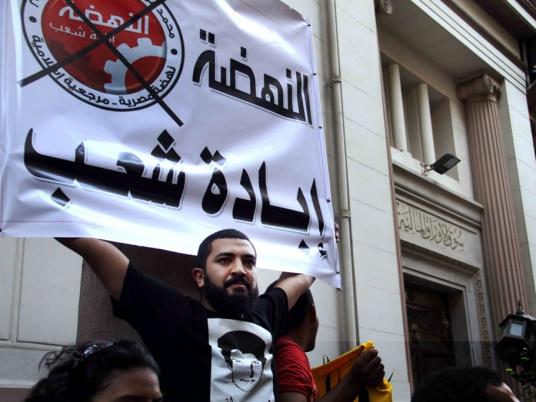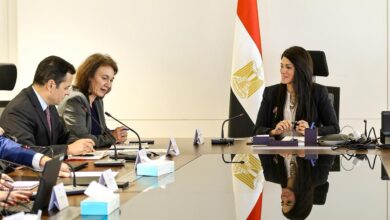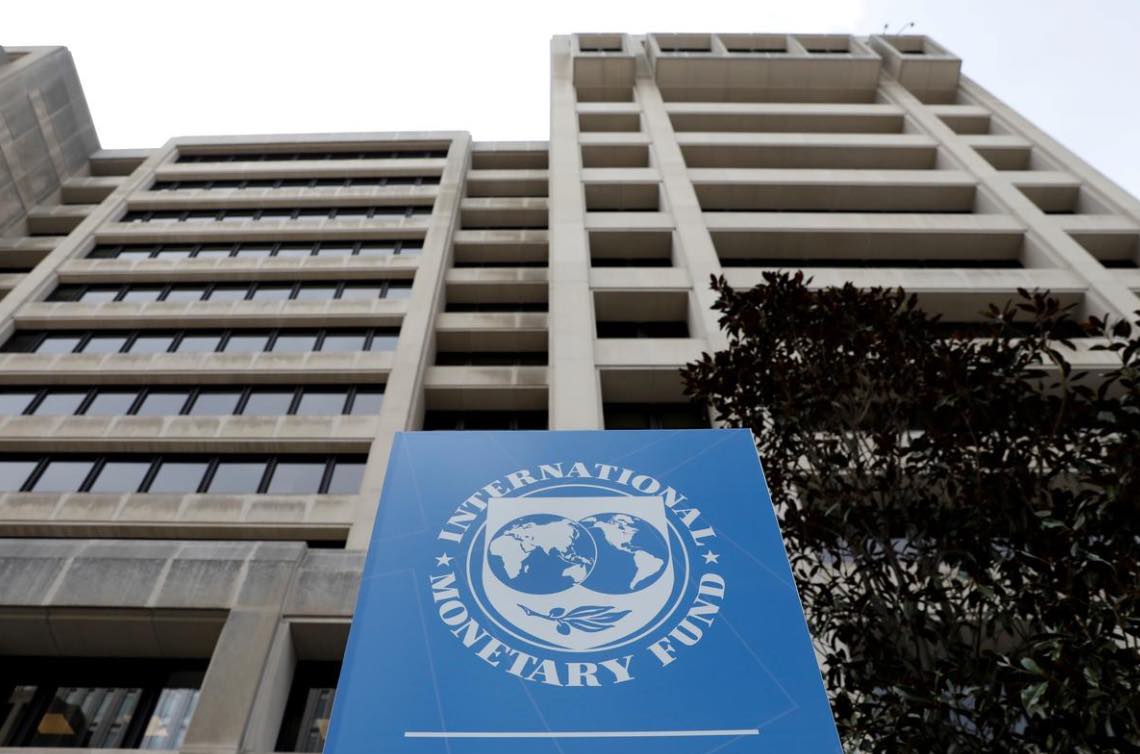
In a statement released on 21 April, the International Monetary Fund said that its Managing Director Christine Lagarde met with the Egyptian delegation, and that “the authorities and IMF staff have made further progress in their discussions in Washington this weekend.”
Progress being the key word here, the rest of the statement fails to provide any detail regarding an actual finalization of the agreement that has been on the negotiating table for months.
“The authorities are firmly committed to addressing Egypt’s economic and financial challenges with the objective of restoring sustained and socially-balanced growth, and they are already taking encouraging actions in this direction.
“Work will continue with the objective of reaching agreement on an IMF Stand-By Arrangement to support the authorities’ national economic program in the coming weeks,” the statement continued.
These words have certainly been heard before.
The Egyptian delegation to Washington was headed by Central Bank of Egypt Governor Hisham Ramez, Finance Minister al-Morsy Hegazy, and Minister of Planning and International Cooperation Ashraf al-Araby.
No news was made of a possible increase in the loan size, from the US$4.8 billion that has been under beleaguered negotiations for months, as was suggested during the IMF delegations visit in Cairo earlier this month.
As the IMF-Egypt story continues, the plot is more of the same and a finale is nowhere on the horizon.
“I believe the loan will come but its size and the timeline are difficult to predict,” Wael Zeyada, head of research at EFG Hermes, told Egypt Independent last week. “The size and the reforms are the bulk of the discussions,” he added.
Al-Araby had acknowledged during the IMF’s Cairo visit that Egypt would “intensify its efforts to receive additional funding to cover the financing deficit until mid-2015.”
The Finance Ministry said in March that it expects the budget deficit to reach LE185 billion (around $23 billion) in fiscal year 2012/13. Even if the socially-sensitive and drastic austerity measures planned are implemented, the IMF loan would still need to be far larger than the $4.8 billion.
But Ramez had said in a later interview that the loan could only be extended by $1 billion.
Officials oscillate between overly optimistic statements that seem definitive, and more even-toned rhetoric regarding the loan timeline.
Araby said on 4 April that he expects a final agreement on the loan within two weeks, though he has also said that it could be postponed until after the October parliamentary elections if the polls originally scheduled for end of April are delayed. And they were.
Abdallah Shehata, economic adviser to the finance minister, had said that negotiations were well underway and that an agreement would likely be signed soon.
However, Angus Blair, founder of MENA think tank The Signet Institute, was less hopeful at the time. “I do not think that a deal between the IMF and the government will be agreed this week,” he said.
The IMF has repeatedly expressed doubts around the government’s ability to finalize and carry out a controversial reform plan that entails higher taxes and curbing subsidies. Meanwhile, a political and social consensus on the reform plan, not specifically stipulated but highly advised by the Fund, is also far out of reach.
Globally, it is seen that the IMF loan would be the stamp of approval needed to unlock billions of dollars of other funding and investments promised to Egypt, but locally, numerous political parties, experts and activists have condemned the government’s plans.
They most vociferously denounce the lack of a long-term vision and, more importantly, the social consequences of a reform program centered on tax raises and subsidy cuts that would impinge most harshly on the poorer segments of society.
Too little, maybe more
$4.8 billion dollars is a feeble sum compared to Egypt’s growing liquidity needs, covering little more than two months of the budget deficit and representing around a quarter of the foreign reserves drop in the past two years.
“We are at a stage where Egypt needs more than $4.8 billion,” says Zeyada. He believes the government could be negotiating a loan of around $20 billion.
The loan itself will probably do little to restore the kind of confidence needed to spur economic recovery, with ongoing political turmoil, insecurity and lack of visibility still standing as the major obstacles to healthy capital inflows.
Zeyada points out that most of the supposedly locked up funding consists of non-guaranteed investments, and believes that only $3-5 billion dollars will actually be made available after the IMF agreement is sealed.
Despite intense diplomatic efforts, it appears potential lenders are limited, besides Qatar which has supported Egypt financially by depositing money directly with the CBE, and Libya which recently pledged a $2 billion loan.
If this funding gives the government some leeway in the negotiations and helps prevent an abrupt economic fallout, the widening deficit still puts considerable pressure on the success of current negotiations.
Even those denouncing the loan admit Egypt can hardly afford to avoid it.
“A plan B is difficult because everybody has been expecting the loan,” says Ahmad Shokr, a Ph.D candidate at NYU and founding member of the Drop Egypt’s Debt Campaign, which strong opposes the reforms tied to the loan.
Blair says the loan size could still be reviewed. “Discussions will continue and as various statements from the IMF have noted, if it warrants, the loan size could be increased, depending on Egypt's needs,” he says.
A bigger loan poses technical problems. The IMF statuses impose a limit to the loan size of its member countries. This cap, variable according to the type of loans, is a multiple of the country’s quota.
The quota is the amount any member country is obliged to provide to the IMF, which is proportional to the size of its economy. The quota also determines the member’s voting power in the IMF decisions and its access to financing.
The IMF statuses state that “under stand-by and extended arrangements, a member can borrow up to 200 percent of its quota annually and 600 percent cumulatively. However, access may be higher in exceptional circumstances.”
According to the IMF data, Egypt has around $1.4 billion of quota at the IMF, meaning that the $4.8 billion already exceeds the 200 percent ceiling.
“The quota does pose a problem for Egypt, but the IMF has some flexibility in dealing with the needs of countries,” says Blair.
There have been precedents of countries borrowing a sum far beyond the 200 percent ceiling—Morocco, for example, received 700 percent of its quota and Jordan 800 percent last year. However, the economic and political contexts in those countries are far more stable compared to the current situation in Egypt.
As a result, IMF approval will largely depend on an evaluation of the government’s economic plan and its capacity to enforce it.
Repeated rescinding on decisions that have been taken by the current government have served to erode confidence in its ability to implement the reform plan that will inevitably accompany the loan, six months before critical parliamentary elections.
IMF loan negotiations have already been cancelled three times in the last two years. The then ruling SCAF refused a first loan in June 2011, arguing that spending cuts would be sufficient to gap the deficit. The IMF stopped negotiations in May 2012 because of a lack of consensus between the military-backed government and the Islamist-dominated parliament. Advanced negotiations were halted last December as President Mohamed Morsy suspended the contingent tax plan.
“The government is hesitating to implement its reform plan for political reasons. Elections are coming,” says Shokr.
Beyond its capacity to enforce it, the IMF could also be unsatisfied with the plan itself.
“I do not think the IMF views the government's proposed reform plan as sufficient to end the economic uncertainty in Egypt and I think the IMF remains frustrated by the lack of pro-growth and creative economic solutions from the government,” says Blair.
Wide criticism has been voiced against the economic policy of the government since Morsy’s election. Experts denounce the lack of long-term vision and describe the plan as a combination of quick-fixes that impact the poor with no significant benefit for the economy.
“We need a bigger plan. All the borrowed money has so far been absorbed by the economy and has not contributed to any recovery,” Zeyada said.
“There is not much of a plan, just short-term solutions that favor the status-quo,” says Shokr. He adds that the proposed reforms, even if not finalized yet, will put most of the burden on ordinary Egyptians by increasing indirect taxes and reducing subsidies.
The increase of the price of cooking gas just before the arrival of the IMF delegation in Cairo illustrates this viewpoint.
The IMF has been widely criticized for what is described as a neoliberal agenda. It is wary of being associated with a reform plan that would increase its unpopularity. The Fund specifically asked for a plan that would be broadly accepted by the wide population and relevant political actors.
However, this is far from being the case. Several protests have been staged to coincide with IMF visits and to denounce the government’s economic plan.
The IMF has held meetings with leading political leaders and parties such as the Nour and Wafd Parties, Hamdeen Sabbahi’s Popular Current and Amr Hamzawy.
Most parties do not contest the necessity of the loan but some are wary of the social cost of the reform plan. Sabbahi opposed “any loan which affects the lives of the poor.” The Nour Party also sees it as burdening the poor.
As a result, the IMF might be reluctant to finance a government whose entire economic agenda is put into question.
“I think the main issue is the view of the IMF and international institutions that Egypt's government has a lack of conviction to grow Egypt's economy as fast as possible,” says Blair.




